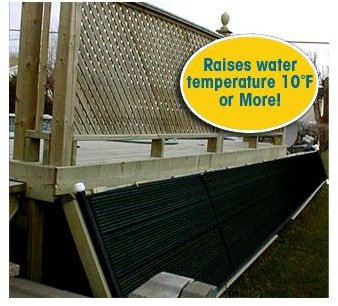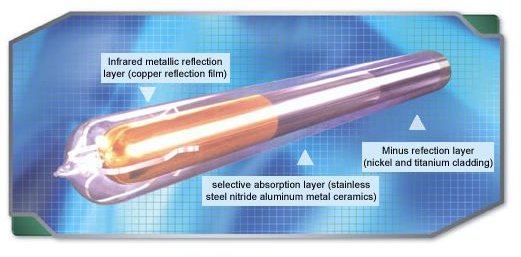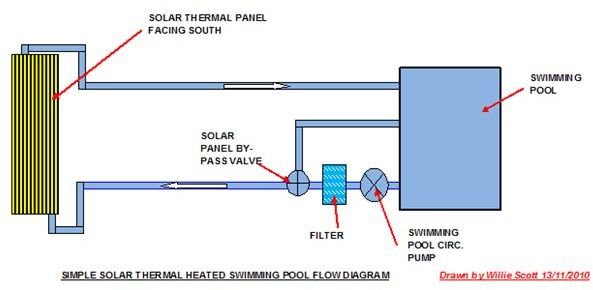Ratings for Solar Above Ground Pool Heaters
Introduction to Ratings for Above Ground Solar Panels
Above ground solar panels used for heating outdoor swimming pools are usually rated by their maximum output in British Thermal Units (BTU’s). Most thermal solar panel manufactures use various other ratings such as projected water temperature rise and water flow rates.
The panels should face south and be at least 50% the size of the surface area of the pool that they are heating.
This is an article on renewable energy using solar thermal panels, and in particular solar panels used to heat the water in an outdoor swimming pool. We begin with a look at the design of the solar panels and move on to examine how ratings for solar above ground pool heaters are presented by the manufacturers.
Design and Operation of Solar Water Heating Panels
A solar thermal panel operates on solar energy emitted by the sun and is made up of 55% visible radiation - visible rays that we all can see. The remainder is almost all infrared radiation, except for a very small amount of ultraviolet radiation.
Modern solar thermal panels, or thermal solar collectors as they are also referred to as, operate on visible and infrared radiation utilizing most of our sun’s spectrum.

A solar panel consists of a rectangular insulated box, usually made of stainless steel and painted black to absorb heat from the sun. Inside the box are rows of glass tubes laid onto the black insulated back, and the water to be heated is pumped through the tubes. Some panels incorporate a solar PV panel in the main panel that provides electricity to run the circulating pump. The tubes may have copper fins incorporated that conduct the heat from the sun’s rays into the water.
Lastly, a glass panel is sealed onto the box above the tubes. This can be double glazed and e-coated to prevent heat loss. Most swimming pool solar water heating panels just have a hardened glass cover as the low temperatures make radiation losses negligible.
The system operates by the water pump supplying water through the filter to the solar panel from the pool. The panel heats the water as it passes through the tubes and returns it a little hotter back to the pool. As the day goes on and, as long as it stays sunny, and the solar panel remains out of the shade the pool water will heat up by around 10°F from its original temperature.

There is a by-pass valve in the system whereby at night time the water can be directed through the filter and back to the pool, bypassing the panel.
Some solar thermal panels have their own PV panel incorporated in them that runs a small circulating pump, which can be used instead of the pool main pump.

Ratings for Above Ground Solar Panels
Solar thermal panels can be rated to the following criteria:
1. Output
This is given in BTU’s and is a measurement of thermal (heat) energy. Watts is a measurement of power. However they can be converted: 1 BTU equals 0.0002928 kilowatt-hour.
2. Efficiency.
This is normally between 40 and 60% for a standard panel and is based on the relationship of the amount of thermal heat available from the sun and the amount of heat converted by the panel.
3. Temperature Rise
The modern solar thermal panels can raise the temperature of the pool by 10°F.
4. Maximum Working Pressure
Water pressure is quoted in lbs/per square inch. A Panel should be rated to 100psi for safety reasons, but this is rarely reached.
5. Fluid Capacity
The amount of water the panel can hold in the tubes and manifolds.
6. Flow Rate
Quantity of water the pump provides through the panel, for swimming pools usually around 4-6 gallons/min for a 40 sq.ft panel.
7. Stagnation Temperature
This is the temperature of water not being circulated (maybe the pump has a cut-out), which is usually around 250°F. This is no problem for glass tubes and reinforced circulation pipes, but it can be detrimental to the cheaper plastic panels and piping.
Reference Web:
Outside Pool Insulation, Prevention of Heat Loss amd Frost Precautions
The following list gives some suggestions for preventing heat loss and enhancing pool water absorbency:
- Always cover pool at night with an insulated cover, or checkout the new “water surface insulating pill.”
- Minimize shading from trees or building shadows.
- Maximize passive solar gain by painting the pool a dark color to absorb heat from the sun; this will be transferred to the water.
- Paint south facing internal pool boundary walls white to reflect the heat into the pool area.
Frost Precautions
As soon as the first frosts are forecast the pool should be drained and given a good wash out.
Filters and pumps should also be drained and now is a good time to carry put a bit of maintenance on both of these components.
Don’t forget to drain the solar panels, as per the manufacturer’s instructions, and it is also a good idea to cover the panels both to stop them operating and keep them free of leaves and bird droppings.
Reference Web: Solar Twin
Summary
In this article we have examined the normal ratings for above ground solar panels, applicable to Solar Thermal Panels for heating swimming pools. Most manufacturers specify these ratings, and indeed use them at the design stage.
Most of us are familiar with these ratings, but for those who aren’t, I added a few notes beside the ratings. One thing I didn’t know was the rule of thumb method of calculating the size of the solar thermal panel required to give the 10°F rise in temperature. This is given by sizing the surface area of the pool and taking 50-60% of this to get the size of panel required.
I also added a few lines about insulating, heat absorption, and frost precautions for information.
